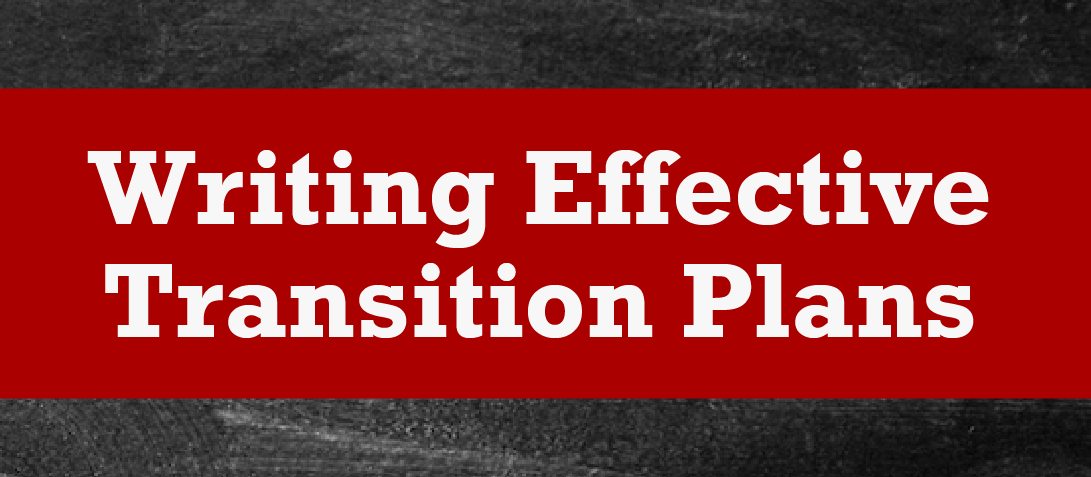Writing Effective Transition Plans
Self-paced training about best practices in developing transition plans within the Individualized Education Program (IEP)
About this Training
This self-paced training is designed to inform educators and families about best practices in developing transition plans within the Individualized Education Program (IEP). View the complete Writing Effective Transition Plans (WETP) course in Canvas, or see details below.
Course Objectives
- Identify and describe the components of transition planning
- Explore and identify online assessments and related resources to support student-centered transition development
- Determine the presence or absence of transition components within an IEP
- Identify transition practices to implement the building of meaningful transition plans and maximize student participation
- Utilize the T-Folio curriculum to align the transition section of the IEP with the High School and Beyond Plan
Course Format
- The series consists of 10 modules that include written and video content.
- Review modules individually or as a team.
- Plan to spend approximately 30 minutes on each module.
- Refer to a high school IEP with transition services. Sample IEPs are available on the OSPI website.
- Reflect on the content by completing activities at the end of each module. You may wish to download the Writing Effective Transition Plans Activity Workbook to record your reflection activity responses.
Course Modules
After a brief introduction to the Center for Change in Transition Services, Module 1 begins with an overview of transition planning for students with disabilities. It identifies the four performance indicators for secondary transition and the role that quality Individual Education Programs (IEPs) play in preparing students for post-school success. Then the components of transition planning are introduced in the form of a flowchart. Module 1 ends by drawing connections between the IEP transition plan and the High School and Beyond Plan (further detailed in Module 9).
The first step in the transition services is to conduct age-appropriate transition assessments. Module 2 addresses assessment components, types, and best practices.
Module 3 begins with an overview of the differences between postsecondary (or post-school) goals and annual goals. It addresses the four areas of postsecondary goals, which include education and training, employment, and if appropriate, independent living skills. It demonstrates how to write measurable postsecondary goals and includes examples of goals in each of the areas.
Module 4 includes information about identifying transition services based on assessments and postsecondary goals. Examples of transition services are included for students in the areas of education/training, employment, and independent living.
Module 5 begins with a definition of the course of study, what should be included, and the timeline. It concludes with student examples and non-examples.
Module 6 addresses how to write measurable and robust annual goals that connect to postsecondary goals.
Module 7 provides information on agency linkages and recommendations for their inclusion in the transition process. Representatives of outside agencies who are well informed about community resources and adult services can be invited to join the regular participants at IEP meetings (students, parents, special education and general education teachers, related service providers, administrators) to support conversations about transition.
Module 8 focuses on the Summary of Academic Achievement and Functional Performance, commonly referred to as the Summary of Performance. It addresses the reasons for completing the summary, provides an overview of the summary components, and offers tips and best practices for completion.
Module 9 begins with an overview of the similarities between the federally-required IEP transition plan and the state-required High School and Beyond Plan (HSBP). Following an example student, Kaleb, the module explores the common components of the IEP and HSBP and how to use the T-Folio transition curriculum to support the development of these documents.
Module 10 is designed to help families/caregivers understand the basic components of IEP transition plans. It includes an introduction to transition plans and highlights each of the areas that should be included.
After completing this course, please consider taking five minutes to reflect on what you’ve learned and share it in the Post-Training Reflection Guide.
Your feedback helps us create materials that are meaningful and accessible to stakeholders across Washington state.
